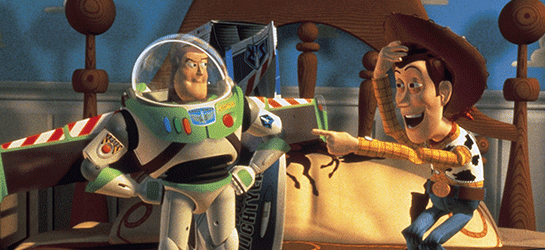
To celebrate the release of Disney-Pixar's Onward, we're taking you on a nostalgia-fuelled journey through the studio's classic films. And we're starting where it all began – back in 1995, with the generation-defining Toy Story...
What's the story of Toy Story?
Young boy Andy is devoted to his toys – but unbeknownst to him, they come alive when he isn't looking. The ragtag band of childhood pals are led by affable cowboy Woody (Tom Hanks), and also include the likes of Bo Peep (Annie Potts), Rex (Wallace Shawn), Ham (John Ratzenberger), Slinky (Jim Varney) and Mr Potato Head (Don Rickles).
However, their happy existence is disrupted when Andy is given a slick new toy for his birthday: flying space cowboy Buzz Lightyear (Tim Allen). The new arrival immediately makes a splash with the gang, filling Woody with jealousy. Eventually, the squabbling twosome end up being separated from the rest of the group, landing in the clutches of childhood bully Sid.
Will they be able to return to Andy and also forge a strong friendship in the process?
How did Toy Story get made?
Let us take you way back to 1979: the powerhouse studio known as Pixar began on a relatively humble note as the Graphics Group, a part of the Computer Division within George Lucas's LucasFilm company. They were responsible for many pioneering effects sequences, including the first-ever fully CGI character: the stained glass knight in 1985 movie Young Sherlock Holmes.
Following the disastrous release of 1986 movie Howard the Duck, Lucas was forced to sell off many of his assets – one of them being the aforementioned Graphics Group. They were purchased by Lucas's friend Steve Jobs (recently fired from Apple) in 1986, who became the majority shareholder. It was official: the transformation into the corporation eventually known as Pixar had begun.
Around this time, Pixar began to become affiliated with Walt Disney Animation Studios (who, in 2006, would purchase the company and officially transform the brand into Disney-Pixar).
Although Pixar's short films stretch back to their pre-Steve Jobs era, it was really from 1986 onwards that the company began to make waves. Critically acclaimed shorts included the Oscar-nominated Luxo Jr. (1986), which introduced audiences to the moveable lamp that eventually became the company's logo, and the Oscar-winning Tin Toy (1988).
In the early 1990s Pixar was suffering multiple layoffs, so they made a historic $26 million deal with Disney to produce three CGI animated feature films. And the first of these was Toy Story, eventually released in 1995.
The end result was nothing less than a watershed moment in cinema and pop culture history. Directed by John Lasseter (former creative head of Pixar), and co-written by Joss Whedon (later of Buffy and Avengers fame), the movie birthed an enormously successful franchise. That said, the production was far from smooth: production shut down midway through so the script could be revised, and there were multiple character changes throughout, including the transformation of Buzz Lightyear from a military figure to a space man.
Although Pixar's initial storyboards had impressed Disney, the evolution of the story caused headaches behind the scenes. Lasseter put the film under the supervision of the Walt Disney Feature Animation team, allowing for the input of veteran talent even while scepticism over the script ran high. In the early stages, there was a desire to add more edginess to the characters, with Woody transforming into, in the words of voice actor Tom Hanks, "a jerk".
After a turbulent three-month period, writers Whedon and Andrew Stanton emerged with a new script that refashioned Woody as a leader. It was also at this point that the script added the notion of Buzz Lightyear not realising he was a toy. The movie's budget was initially set at $17 million – following an intervention by Jobs and then Pixar president Ed Catmul, a compromise was reached and the budget rose to $30 million, allowing Lasseter and his team to realise their creative aspirations.
Throughout the process, Lasseter pushed for more organic CGI textures: "We had to make things look more organic. Every leaf and blade of grass had to be created. We had to give the world a sense of history. So the doors are banged up, the floors have scuffs". The character of Woody alone required 723 motion controls, including 212 for his face and 58 for his mouth.
The first piece of animation, a 30-second test, was delivered to Disney in June 1992, when the company requested a sample of what the film would look like. Lasseter wanted to impress Disney with a number of things in the test that could not be done in traditional, hand-drawn animation, such as Woody's yellow plaid shirt with red stripes, the reflections in Buzz's helmet and the decals on his space suit.
Lasseter said that Hanks was always his first choice for the role of Woody, saying that even in films like A League of Their Own, where Hanks plays a comically boorish baseball coach, he retains an innate likeability. Lasseter decided to animate a pre-existing monologue from 1988 Hanks movie Turner and Hooch, working the animation test around the vocals to give an idea of how Woody would turn out.
Hanks recorded his lines in the studio together with Tim Allen, who won the role after the likes of Jim Carrey and Bill Murray were considered. Billy Crystal, later to voice Mike in Pixar's Monsters Inc, turned down the role to his regret, but later credited Allen's performance as "fantastic".
A gargantuan 300 computers were used to render the final movie, requiring 800,000 machine hours and 114,240 frames of animation in total.
Who composed the Toy Story soundtrack?
The music for Toy Story was composed by veteran songwriting satirist Randy Newman, responsible for acerbic numbers like 'Short People'. By 1995, he was also an accomplished composer of dramatic scores for feature films, having been Oscar-nominated in 1990 for Barry Levinson's drama Avalon. Both of these sides of Newman's personality, sparkling wit and heartfelt sincerity, were to play a part in his Toy Story soundtrack.
However, nailing down the approach of the music wasn't easy. Lasseter was adamant that the movie not be a musical, and co-writer Whedon agreed, believing the film to be a buddy movie, first and foremost. (Script inspirations included 1988 Robert De Niro-Charles Grodin comedy Midnight Run.) As a compromise, Disney agreed that none of the characters in the film would sing the songs, but it would have to contain non-diegetic (music that exists outside the world of the movie) songs interspersed throughout.
Newman's efforts resulted in ear-worming numbers like 'You've Got a Friend In Me', which got the composer one of his two Oscar nominations (the other was for Best Original Score). Lasseter said of Newman's music: "His songs are touching, witty, and satirical, and he would deliver the emotional underpinning for every scene".
What are some classic quotes from Toy Story?
Buzz Lightyear: "To infinity... and beyond!"
Buzz Lightyear: "That wasn't flying. That was falling with style."
Woody: "You, are, a toyyyyy! You're not the real thing. You're an action figure. You are a child's play thing!"
Mr Potato Head: "Son of a building block!"
Rex: "What if Andy gets another dinosaur? A mean one? I just don't think I can take that kind of rejection!"
What is the legacy of Toy Story?
Pixar's first feature film was released in the USA on 22nd November 1995, following its premiere at the Los Angeles El Capitan Theatre. Its impact was immediately noticeable, transforming the capabilities of feature-length CGI animation and emboldening a host of film studios to undertake their own approach. The likes of DreamWorks (Shrek) and Blue Sky (Ice Age) owe it to Toy Story for getting the ball rolling.
Critics raved about the movie: The Hollywood Reporter's Michael Rechtshaffen raved, "With "instant classic" written all over it, Toy Story, the first full-length feature entirely composed of computer-generated animation, is a visually astounding, wildly inventive winner".
Eventually grossing $373 million at the global box office, Toy Story's artistic credentials were secured when it won a Special Achievement Award for John Lasseter. It was awarded for "For the development and inspired application of techniques that have made possible the first feature-length computer-animated film".
Following Toy Story's release, Pixar would grow to become a global powerhouse in pioneering animation, paving the way for the likes of Finding Nemo, Wall-E and Inside Out years later. It was the first instalment of a series that initially encompassed three movies, before this year's release of Toy Story 4.
Pixar had indeed gone to infinity and beyond, defining the childhood of an entire generation of children.
Click here to book your tickets for Onward, released in Cineworld cinemas on the 6th of March. And don't forget to tweet us your favourite Disney-Pixar movies @Cineworld.
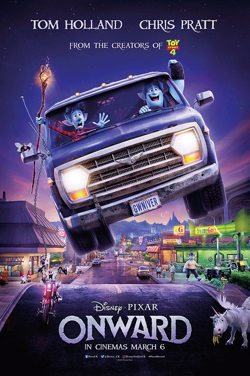
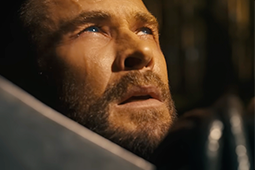
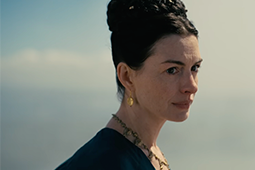

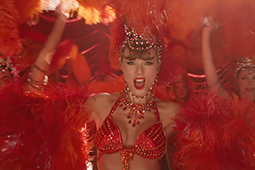
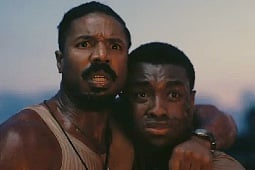
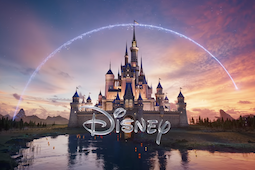
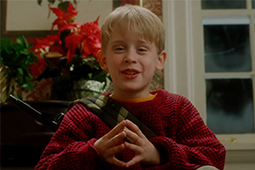
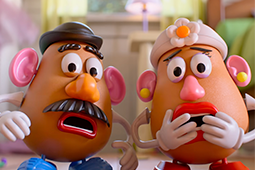
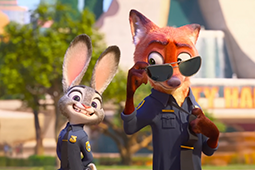
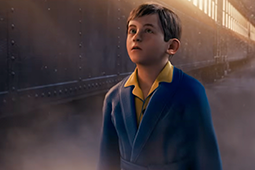
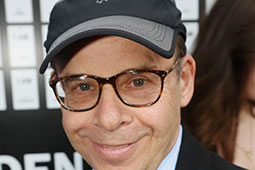


.jpg)
.png)





